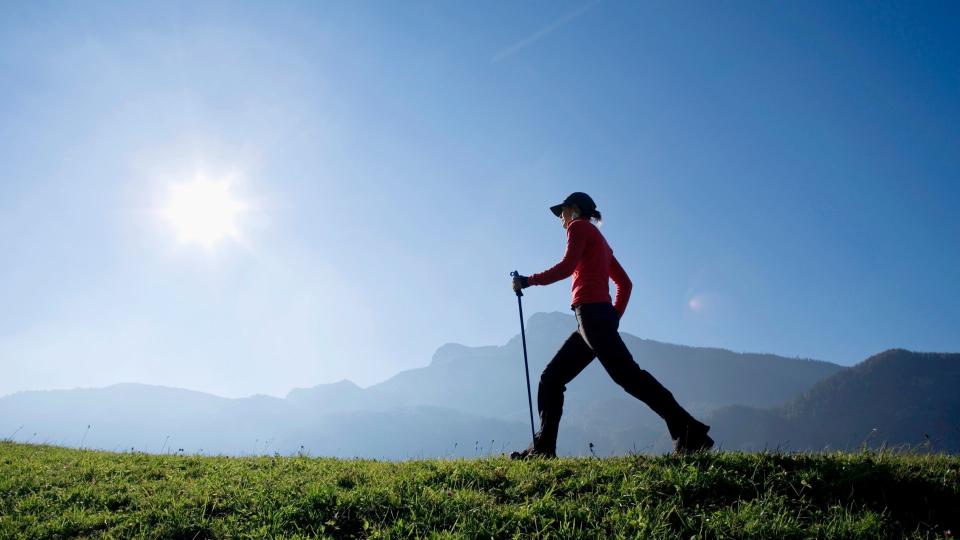5 surprising facts you probably didn’t know about Nordic walking

We all know spending time outdoors does wonders for our mental and physical health, but if you're looking to upgrade your casual walk to something a little more rigorous (but still low-impact), then you may want to give Nordic Walking a go.
Nordic walking originated from Finland in the 80s and was used as an off-season training regime for cross-country skiers during the summer months. It's basically a walking technique that uses poles (not trekking poles) to help propel you along various terrain, firing up your upper and lower body muscles in the process.
Although it’s developed a bit of a reputation as an activity for elderly folk, Nordic Walking has a ton of benefits that makes it ideal for everyone. Plus, the technique isn’t as easy as you think to master (there’s a lot more to it than simply swinging the poles). Keen to try it yourself? Here's five surprising facts that you probably didn't know about Nordic walking...
1. It works 90% of your skeletal muscles

Despite being low-impact, Nordic walking is a fantastic full-body workout. In fact, it works more muscles than running. When we walk we work our quads, glutes, hamstrings, and calf muscles, but Nordic walking takes things a step further utilising the upper body too. Swinging the Nordic poles back and forth will seriously fire up your triceps, shoulders, and back muscles. It's also a great core workout too.
2. It burns a lot of calories
Not a fan of running, but want to burn lots of calories? Nordic walking could be a good alternative! While it won't burn as many calories as running, it burns far more than regular walking (according to Nordic Walking UK up to 40% more). This is because Nordic walking is a compound exercise, working multiple muscles in the body, and far more than regular walking for that matter. The more muscles we use, the more energy our body requires, which burns more calories.
3. It’s good for your joints

One reasons people struggle to run is due to the immense amount of force it puts through our joints (three times your body weight), but Nordic walking is far easier on the knees, ankles, and hips. This is because the poles help take some of the load and distribute it more evenly across the body. This makes you lighter on your feet and reduces pressure on your joints.
4. You can do more than just walk
Despite its name, you don’t just have to walk with a pair of Nordic walking poles, you can really spice things up and use them for a variety of activities. For example, you can run with Nordic poles (this is particularly popular with trail runners), do interval training with them, or even speedwork (such as jeffing or fartlek). You don’t have to walk or run either, you can skip with Nordic poles, or even leap.
5. It supports lymphatic drainage
Our lymphatic system helps protect us from infection and Nordic walking can support this, particularly for those who suffer from lymphedema in the arms. We have lymph nodes under the armpit and, according to Nordic Walking UK, the ‘squeeze-release’ action your forearm uses during Nordic walking helps extra lymph to flow out of the arm.
